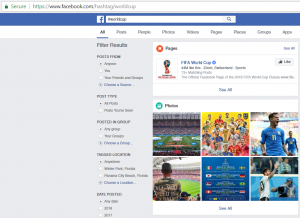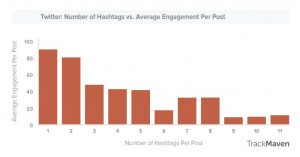#How #many #hashtags #is #too #many #hashtags? Depending on the social media platform you are using, the number and type of hashtags used can greatly impact the success of posts on a variety of social media platforms. When posting on social media, the goal is to attract as many relevant views and followers as possible. Hashtags are the most efficient way to do this – if they are used correctly.
Hashtags are used to help social media users find content related to a specific topic or event. For marketers, it is an easy way to bring attention to their business or cause to people who may not already be following them. By including relevant hashtags, they can ensure their content will show up in the feed of the audience they are targeting.
There are many factors to consider using hashtags in a post, and most of these are specific to the type of platform being used. From community guidelines to algorithms and user options, these factors help shape the way hashtags can best be used to gain attention from the intended audience.
With users now able to follow hashtags on Instagram, it is easier for intended audiences to find content related to their topics of interest. This is helpful for marketers, who can now cultivate new followers more effectively by tagging their posts with relevant hashtags. As seen in the graph below, TrackMaven recommends using nine hashtags for best user engagement, but only if they are appropriate for the content.

According to Hootsuite, posts with hashtags have better engagement when they include hashtags that are actually relevant to the content. New features in Instagram allow users to mark posts they don’t want to see on a hashtag they follow – this can be detrimental to marketers if they are incorrectly tagging their posts.
It isn’t helpful to use the same hashtags over and over again either. As Hootsuite explains, this goes against Instagram’s community guidelines, which don’t allow users to post repeat content. Instead, change hashtags depending on the post and use them in a variety of ways, like in the body of the content, at the end of the post, or even in the account bio.
Facebook requires very few hashtags to get the best results. Sprout Social explains that one or two hashtags are all that need to be included in a post. This is backed up by data from TrackMaven. In their analysis of over 65,000 social media posts, they determined that the more hashtags there were in a Facebook post, the less engagement there was with the intended audience.
While hashtags are not as popular on Facebook as other platforms, Sprout Social explains that they can still be used effectively to help users find a variety of similar content and bring an interactive element that can be more attractive for viewers (as seen in the example search below from Sprout Social).

Hashtags on LinkedIn don’t typically work the same way as they would on Instagram and other platforms because of how LinkedIn is used. However, the Digital Marketing Institute states that one to three hashtags can still be helpful to promote a brand or cause to users that are outside of a network or group.
Unlike Instagram, hashtags on LinkedIn are best used in the actual content of a post, and not just included at the end.
Because this platform is mostly used for searching purposes, it’s important to use very specific hashtags on this platform. According to Digital Marketing Institute, using broad or general keywords will make it difficult for users to find, as it will most likely get lost in their feed.
On this platform, Simple Pin Media recommends using only a few hashtags in the description of the pin. Anything more can be too overwhelming for users and does not do anything to increase engagement or interaction with users. Hashtags should be actually relevant to the content, or users might be disgruntled that the post is showing up in their results when it isn’t related to their search.
When it comes to Twitter, using more hashtags does not necessarily mean that posts will attract more users. According to Digital Marketing Institute, a tweet only needs one or two hashtags to have the desired impact. For even greater success, try using hashtags that are trending, as this means there are many other people posting and having conversations about the same topic. Sprout Social has a list of different software that can be used to find what topics are currently trending.

This graph from TrackMaven demonstrates that less hashtags means higher user engagement.
The length of the hashtag itself shouldn’t be too long, as it will be harder to find and more difficult to read. Always look over the hashtag for any potential hidden meanings or confusion with other topics. Customized hashtags can be used to great effect for marking campaigns and brand awareness – be sure to do thorough research to ensure no one else is using it, and that it is relevant to the cause or purpose.
